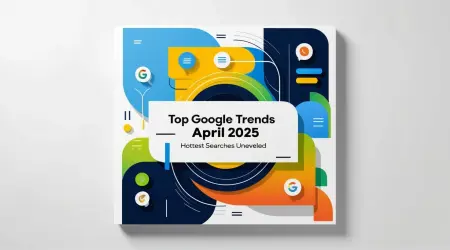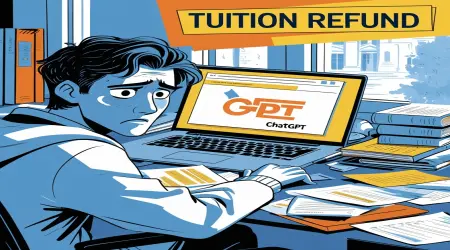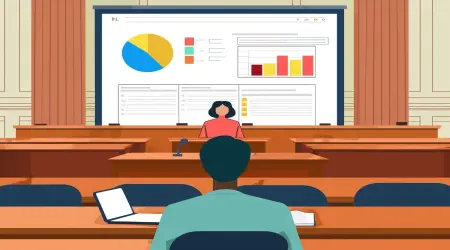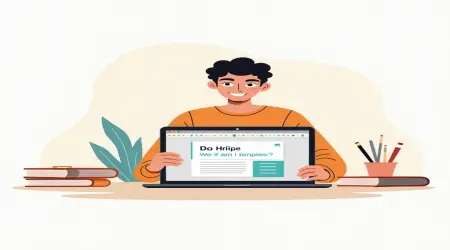College Student Wants Tuition Refund After Professor Uses ChatGPT: What You Need to Know
Introduction
Imagine this: you’re a college student showing up to classes, putting in the work, and paying a ton of money for tuition, only to find out your professor is using an AI chatbot to put together your lessons. This isn’t some sci-fi story; it really happened to Jane Doe, a sophomore at XYZ University. In May 2025, she made waves by asking for a full tuition refund after realizing her professor was using ChatGPT. Her bold move sparked a huge conversation about the ethics of AI in education, the worth of a college degree, and what students deserve in an increasingly digital world. Why should we care about this, and what does it mean for how we learn in the future? This guide dives deep into what happened, looking at the ethical, legal, and educational angles. Whether you’re a student, teacher, or just curious about tech, let's break down this important moment in education.
👉Should You Use TikTok Ads for a Niche Product in 2025?
The Incident: What Went Down
Back in early May 2025, Jane Doe, an English major at XYZ University, noticed something weird about her literature professor’s lecture slides. They felt kind of bland and didn’t have the depth she expected from an experienced teacher. So, she decided to check things out using an AI detection tool and found out that a lot of the content was created by ChatGPT, an AI language model made by OpenAI. Feeling betrayed, Doe confronted her professor, Dr. John Smith, who admitted he was using the tool to make his life easier. Furious, Doe demanded a full refund for her $15,000 semester tuition, saying she paid for real human teaching, not stuff churned out by a machine.
The university hasn’t done much in response, starting an investigation but not giving any quick answers. Doe’s situation, which was first covered by The Guardian, has gone viral, kicking off discussions on social media platforms like X, where students and educators debate the use of AI in higher education. This isn’t just a one-time thing; it’s a turning point in the ongoing struggle between technology and traditional teaching methods.
Why This Hits Home
Doe’s demand speaks to a common worry: are students truly getting their money’s worth? With rising tuition fees averaging $41,540 a year at private U.S. colleges, students want personal, human-led instruction. When AI steps in, it feels like that promise is broken.
Example:
Imagine you’re in a packed lecture hall, jotting down notes, and then realize the slides you’re looking at were whipped up by a chatbot in no time. For Doe, this was like a breach of trust, which is why she decided to take action.
Key Insight:
The incident with the professor using ChatGPT in class highlights a bigger issue: as AI becomes more common, colleges need to be clear about its use to keep students' trust intact.
Ethical Dilemmas: AI in Education
Using AI in education has pros and cons. It can make things more efficient, but it also raises some tricky ethical questions. Is it fair for professors to lean on tools like ChatGPT without letting anyone know? And what does this mean for how real teaching should look?
The Ethics of AI in Teaching
AI tools can help with tasks like making lecture notes or preparing assignments, giving professors more time to mentor or do research. Dr. Emily Carter, an education ethics expert quoted in EdTech Today, mentions that "AI is just a tool, not a teacher. Using it is okay if it’s open about it and if it helps, not replaces, human teaching." But when professors like Dr. Smith use AI on the down-low, they start to mess with the important bonds that make education work. Students like Doe expect mentorship, meaningful feedback, and depth—things AI just can’t match yet.
Transparency Issues
Not being open about AI use is a big deal. A 2024 survey by Forbes found that 70% of universities are checking out AI tools, but only 30% have clear rules about how to use them. Without guidelines, students might feel tricked, like Doe did when she figured out her professor was leaning on ChatGPT.
Example:
Picture a student asking a deep question about Shakespeare and getting a basic, AI-generated answer instead. Feeling like they’re learning from a machine can really shake trust in the whole education process.
Student Viewpoints
Doe's feelings echo what many students are thinking. On social media, posts with hashtags like #NoAIinEducation show growing student worry. One user even said, "I’m paying $50,000 for a degree, not notes from a chatbot!" (X post). Students are concerned that AI is making their education feel less valuable, especially when they’re paying for the promise of real human expertise.
Key Insight:
The AI ethics in academia discussion boils down to being open and striking a balance between tech and genuine human interaction. Schools need to tackle these issues to keep their credibility.
Legal Points: Can Students Ask for Refunds?
Doe's request for a refund raises an important question: do students have a legal right to get their tuition back if AI is being used in their classes? The situation is complicated and goes back to contract law and university policies.
Contract Law and Education
When students enroll, they basically enter a contract with their school, expecting a certain level of education. But as legal expert Sarah Johnson mentioned to CNN, "Unless the university specifically promises human-led teaching, students might find it hard to show that a breach of contract has happened." Doe’s case hinges on whether XYZ University’s marketing or rules promised personalized instruction, which AI might mess with.
Precedents and Challenges
While there aren't specific legal cases about asking for refunds due to AI use, some similar situations can give us clues. During the COVID-19 pandemic, students sued schools for switching to online learning, arguing that it was not as good as in-person classes. Some cases won, but only when schools didn’t deliver what they had promised. Doe’s request might be tough unless she can prove that AI hurt the quality of her education.
Example:
Picture Doe presenting her case to a university board, claiming that AI-generated slides didn’t have the depth of lectures crafted by real people. Without solid proof of harm, her request might struggle.
👉Netflix’s Generative AI Ads in 2026: Strategy, Competitors & Trends
Institutional Policies
Many universities don’t have clear guidelines on AI use, making legal issues trickier. A 2025 report from Inside Higher Ed showed that only 20% of U.S. colleges have rules about AI in teaching. This gap leaves students like Doe stuck, with little recourse unless colleges create clearer standards.
Key Insight:
The legal rights of students regarding AI are unclear, but growing student activism might push universities to clarify their rules.
Impact on Education: The Role of AI
AI is changing education in both positive and tricky ways. So how is it changing teaching, and what does that mean for students like Doe?
Benefits of AI in Education
AI tools like ChatGPT can boost education in various ways:
- Efficiency : Professors can automate basic tasks like writing syllabi or grading quizzes, leaving them with more time to engage with students.
- Personalization : AI can adjust material to fit different learning styles, like what’s done in platforms like Khan Academy.
- Accessibility : Tools can help students with disabilities or language challenges, making learning more inclusive.
Example:
A professor uses ChatGPT to create a study guide, which gives the professor more time to help students who need extra support. This partnership can really level up learning if it’s done transparently.
Drawbacks of AI in Education
But using AI without a plan can create problems:
- Loss of Human Connection : Students appreciate personal interaction that AI can’t provide.
- Quality Concerns : AI-generated material might not have the subtlety needed in subjects like literature.
- Equity Issues : Not all students can access AI tools, which could make educational gaps worse.
Example:
A student from a rural background who doesn't have the latest tech feels left out when her professor relies on AI to teach, showing equity issues in play.
The Future of Education with AI
Looking forward, AI will likely become even more embedded in education. A 2025 study by Forbes predicts that by 2030, 80% of colleges will incorporate AI into teaching. But situations like Doe’s highlight the urgent need for ethical rules and transparency to ensure AI helps rather than harms education.
Key Insight:
The impact of AI on teaching is a big deal, but schools need to find the right balance between innovation and accountability to keep students’ trust.
👉The Ultimate Guide to Apple Products: Features, FAQs, and Health Insights
Spotting AI-Generated Content
As AI use in schools goes up, figuring out what’s AI-generated is key for transparency. But how can students and schools spot AI-made material?
Current Detection Methods
There are a few tools and techniques to help:
- Plagiarism Detection Software : Tools like Turnitin can sometimes catch AI-generated text, but their effectiveness can vary.
- Stylistic Analysis : People can often notice repetitive phrasing or odd tones, just like Doe did with her professor’s slides.
- Watermarking : Some AI models, like newer versions of ChatGPT, put hidden markers to show content created by machines.
Example:
A student runs a professor's lecture notes through a detection tool, finding 70% of it flagged as AI-generated. This could lead to a deeper look into the situation.
Challenges and Future Developments
Detection tools aren’t perfect. A 2025 research paper on arXiv mentions that new AI models can imitate human writing closely, making detection tricky. Researchers are working on machine learning tools to analyze writing patterns, but these solutions are still in the works. Until there are dependable methods, openness from teachers is super important.
Key Insight:
How to spot AI-generated content is a hot topic, as current tools can help but aren’t foolproof.
Case Studies: Similar Incidents Around the World
Jane Doe’s situation fits into a worldwide trend, with students and schools facing the reality of AI in education.
Case Study 1: University of Toronto (2024)
In 2024, students at the University of Toronto protested after finding out their professor used ChatGPT to grade essays. The school responded by requiring professors to disclose AI use, setting a new standard for honesty.
Case Study 2: MIT (2023)
The OpenCourseWare at MIT faced a backlash when students discovered AI-generated material in online courses. This situation led to a review of AI policies, stressing the importance of human involvement.
Case Study 3: University of Tokyo (2024)
In Japan, students complained when they found out that a professor’s research papers were co-authored with ChatGPT, sparking worries about academic integrity. The university set up stricter rules for AI use in research.
Example:
A student in Tokyo, frustrated by AI’s role in her professor’s work, joins fellow students in a protest, resonating with Doe’s demand for accountability.
Key Insight:
Case studies on AI in education show a worldwide push for transparency and ethical standards, driven by student activism.
Student Voices: Protests and Concerns
Around the globe, students are speaking out against unchecked AI use in schools, using social media and rallies to call for change.
Social Media Campaigns
On X, hashtags like #NoAIinEducation and #HumanTeachersMatter are gaining traction, with students sharing experiences of AI misuse. A viral post pointed out, "Why am I paying for a degree if a bot is teaching me?" (X post). These campaigns amplify student worries and urge universities to make changes.
On-Campus Activism
At schools like XYZ, students are creating forums and petitions asking for clear rules around AI use. Doe's case has encouraged others to step up, with students at different institutions pushing for refunds or policy changes.
Example:
A group of XYZ University students holds a rally, waving signs that say, "We Pay for Professors, Not Bots!" Their efforts attract media attention, highlighting the importance of the issue.
Key Insight:
Student protests against AI in education are on the rise, reflecting a push for clarity and accountability in academia.
👉Netflix’s Generative AI Ads in 2026: Strategy, Competitors & Trends
Frequently Asked Questions
- Can students legally ask for refunds for AI use in teaching?
It really depends on the university's contract and rules. If there aren’t clear promises about human-led teaching, the grounds for legal action might be weak. - Is it ethical for professors to use ChatGPT?
It’s okay to use it, as long as they’re open about it and it enhances, not replaces, their teaching. Transparency is crucial. - How can I tell if my professor is using AI?
You can try detection tools like Turnitin or watch for repetitive phrasing, but the results might not be foolproof. - What’s the future of AI in education?
AI will probably play a bigger role, but we need ethical guidelines and transparency to keep trust intact.
Conclusion: Moving Forward in Education
Jane Doe's push for a refund after catching her professor using ChatGPT is more than just a news snippet—it’s a wake-up call for schools everywhere. As AI transforms how we learn, colleges need to weigh the benefits against the need for honesty, human connection, and responsibility. Students deserve to know what’s behind their education, especially with tuition costs skyrocketing. Educators need to use AI wisely, making sure it boosts rather than takes away from their teaching.
This whole incident underscores the pressing need for clear rules around AI in education. For students, it’s a call to stand up for their rights; for teachers, it’s a reminder about authenticity; and for universities, it’s a chance to lead ethically in this digital age. At temploop, we’re here to keep digging into these evolving issues and helping you navigate the future of learning. Check out our blog for more on AI, education, and what’s next, and join in the conversation about creating a fair and innovative academic world.
Key Citations
- Student Demands Refund After Professor Caught Using ChatGPT - The Guardian
- The Ethics of AI in the Classroom: A Case Study - EdTech Today
- College Student Sues University Over Professor's Use of AI - CNN
- Should Students Get Refunds for AI-Assisted Teaching? - Inside Higher Ed
- Detecting AI-Generated Content in Academic Settings - arXiv
- The Rise of AI in Education: Opportunities and Challenges - Forbes
- ChatGPT in Academia: A Double-Edged Sword - TechCrunch
- Faculty Perspectives on AI Tools Like ChatGPT - The Chronicle of Higher Education
- Student Protest Against AI in Education - X Post
- Demand for Human Teachers in AI Era - X Post










